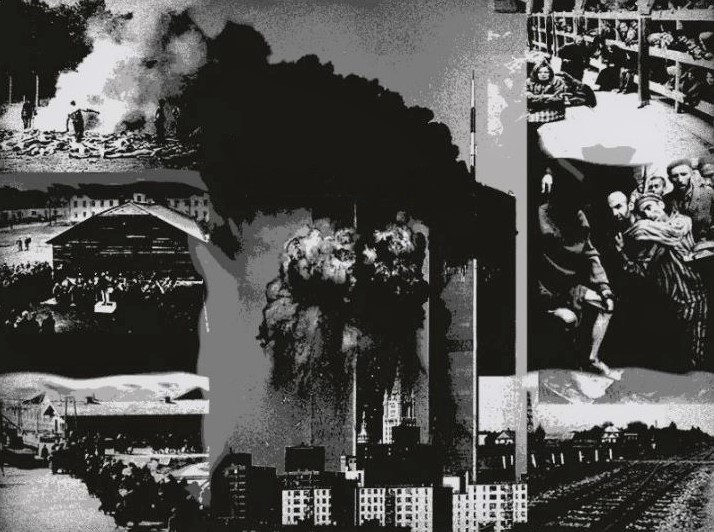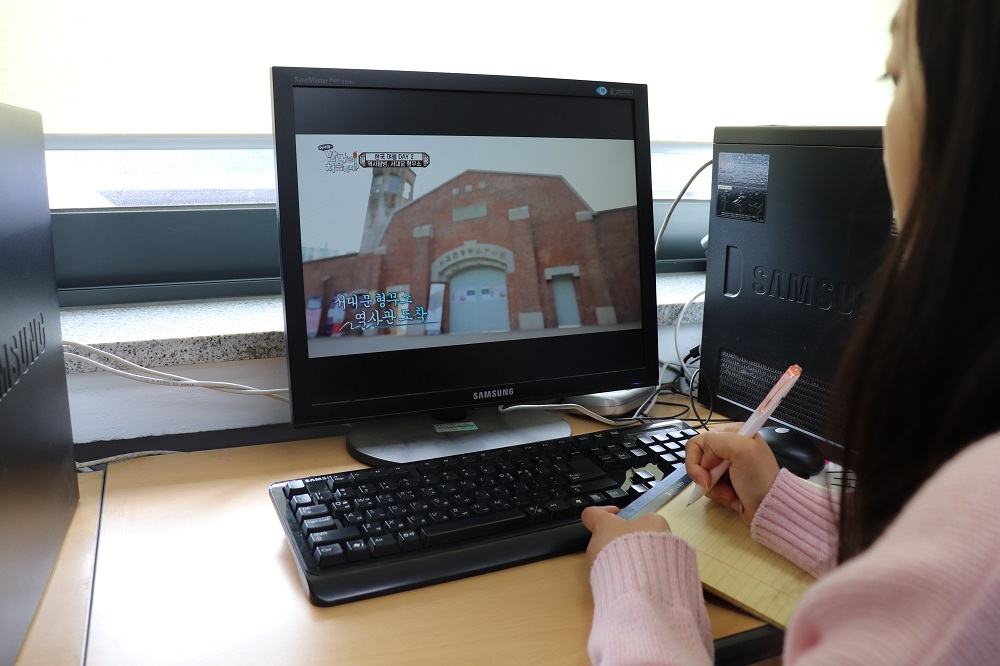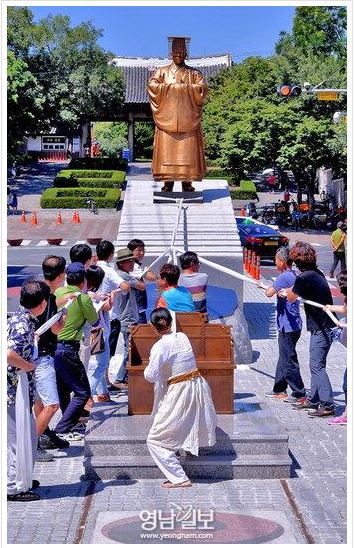
A journey always has a purpose, and this purpose varies from journey to journey such as taking a rest, eating delicious food, doing extreme sports, and so on. Have you ever contemplated going on a dark themed tour? Instead of a joyous activity, how about taking a historic tour in darkness? Although it has no light yet, through the darkness, we can remember historical events and share the pain of our ancestors. By empathizing their pain, we can bring light to the darkness. From now on, let’s join a tour that is full of darkness.

Go to ‘3D’ Tourism
Dark tourism is also called as black tourism or grief tourism but they all focus on the same theme. They revolve around learning lessons from events in history. These events could be natural calamities or disasters, a tragic battle in war, or the slaughter of innocent people. These types of tourism have gained popularity recently, but they are not new. Long before the term dark tourism became a recognized term, Korea already had its own dark tourism at the Demilitarized Zone (DMZ) or the Korean War sites, and so on. It is only recently that people have called this tourism 'dark tourism', a term that was brought to the public by media like TV and books. According to Daehaknaeil 20s’ laboratory, there are approximately 13,000 posts containing the hastage #Darktourism on various SNS platforms at present. These hashtags have sparked to increase interest among people for this dark tourism.
Dark tourism has three subdivisions: ‘dark’, ‘darker’, and ‘darkest’ depending on how closely related to death and disaster. A ‘dark tourism’ is a visit to a museum or memorial which are typically not where the actual event occurred. To truly feel the dark event, visitors are taken to dark places where history took place such as the Auschwitz Concentration Camp, and this type of tourism is called ‘darker tourism’. In fact, the number of visitors to Auschwitz Concentration Camp in Germany increased from about 50,000 in 2001 to about 180,000 in 2015.1) In other words, darker tourism is gaining more popularity. With their popularity increasing, tour agencies have added the extra experiences of sensing the pain of sufferers directly, and this is called ‘darkest tourism’. For instance, a darkest tourism may heighten the experience by using virtual reality experiences to show prisoners being tortured. People no longer indirectly experience others’ pain, but experience it firsthand.

PHOTO BY KYB
Photo of Jungmyeongjeon
The Way of Dark Tourism
As mentioned before, dark tourism is not new. Then, why has it recently gaining so much popularity? One of the biggest influences is TV. Most travel programs introduce lighter and more joyful excursions, so it was unusual to learn about dark tourism. However, one entertainment program ‘Yo! Welcome to Korea!’ by a group of German friends, followed their adventure on a dark tourism for about 20 minutes of the episode’s 80 minutes broadcast. Despite being only one-fourth of the show, the dark tourism part was so powerful that it was chosen as the best experience in Korea by this program. Not long after the broadcast, the program ‘My First Dark Tour’, a dark tourism themed show was aired, and although it was not a lengthy episode, the program with its more detailed and realistic pictures attracted the attention of Korean viewers. Park Hyeonyoung, a high school student who joined a dark tourism after watching the broadcast, said, "I didn’t know about dark tourism before learning about it on TV, but after watching that, I knew that my previous trip could be the part of it. I have been to Jungmyeongjeon of Deoksugung Palace, but I only went there on a picnic, so I couldn’t feel any of its true history. However, this time I felt like I was walking on history because the dark tourism gave the place’s purpose for me.” Like Park, more and more people have started to join dark tourism at historical sites and learn about the pain of our ancestors.
Another reason sparking on dark tourism is the active development of ‘Storytelling Tour’. Storytelling is not only the retelling of tales, but the active expression of history through media. Our typical thought of storytelling is one person passing on a tale to listeners, but storytelling has evolved. That is, from now on, storytelling is proceeded with not only a single storyteller, but also diverse media. Adding to the storytelling is the video and animated effects through various media such as the Internet of Things (IOT) and beacon. Use of media adds to tourists’ understanding and sympathy and brings them closer to the actual event. Kim Seokyoon, an expert in tourism, said, “In case of tourism in Gwangju, people get the chance to look around the site and facilities of places that are important to the May 18 Gwangju Democratization Movement, and then later they can view a short film in the theater at the end of the tourism. The introduction of media into dark tourism has broaden tourists’ empathy and shared diverse opinions each other from the process of reflection. In addition, storytelling that ties factual stories to reality is an area to be evolved constantly.”2) Therefore, besides storytelling at the actual historic location, the development of various contents for the tourists has led to a rise in dark tourism.

Which One Is Right for Everyone
Dark tourism is developing in multifaceted ways, but there are two things to think together. First, should we expose everyone to the pains of the past? Many people have already implicitly agreed that the tourism can be great education methods for history, and they can also be great means of comforting families of victims ruined by the event to know that their loss was not for nothing. In fact, Eddo Schonherz, one of the interviewers for the entertainment program ‘My First Dark Tour’ and real prisoner in Stasi’s Prison, said, “I think the prison should be preserved because I have done nothing wrong unlike assailants who caught innocent people. I hope we continue to open up these historic sites so that our present and future generations learn the historic truth about life in Germany.” In other words, historical sites are essential because future generations must remember history, perpetrators can be given the chance to reflect on their behavior, and victims can be comforted knowing they will not be forgotten. However, some people claim there is no justifiable reason to recall the painful memories of victims using the term of ‘resurrection of memory’. They also insist that we don’t have to leave shameful historical sites. Because of these polar end comments and feelings, controversy surrounds the dark tourism.
Second, people must consider whether it is ethical to commercialize historical sites. With dark tourism on the rise, local governments are rapidly trying to designate regions for dark tourism. The effort by local governments is significant in that it can best inform the historic knowledge by constructing stories and preserving historic sites. However, there has been concern lately that history is being distorted by the focus on merchandising. For example, the statue of Sunjong, the 27th king of the Joseon Dynasty, standing in front of Daegu Dalseong Park, was erected last year, but he is wearing a colorful gown. This is unacceptable behavior for a king. Oh Hongseok, a member of the Center for Historical Truth and Justice said, “If people who erected the statue truly understood the historical time, they would know that King Sunjong, was forced to follow the Japanese rules. It is inappropriate to glamorize the statue to attract people to place of sorrow and somberness. Moreover, it is clearly a distortion of history.”3) If such problems continue to rise, unrest in society will grow, so these type of controversies need to be resolved so that the dark tourism will flourish in a good way.

No Darkness in the Light
The dark tourism still has a long way to go. It revolves around a history of pain, not joy, so there are many issues that need to be considered, unlike other cultures. Nevertheless, the first step of creating proper dark tourism has already begun. People who visit horrific sites, reflect on the past and vow never to let the atrocity occur again. In front of Auschwitz Concentration Camp, there is one phrase "Those who don’t remember the past are condemned to repeat it." The future is written in the present, and learning from history is the way to reflect on events so that they are not repeated. Only when the world works together, all the darkness melt away due to the intensity of the light.
1) Jang Seonggon, Kang Dongjin, 「Analysis of the Process and Definition of Sustainable Dark Tourism」, Kyungsung University, 2016
2) Han Hyeongjin, “Dark Tourism, ‘Dark’ and ‘Tourism’ Can’t Be Separated Respectively”, Jejusori, December 29, 2017
3) Choi Sooho, “Primitive Statue, Daegu Local Mourning in the Claim of Demolition of Sunjong Statue”, Yonhap News, April 5, 2018


